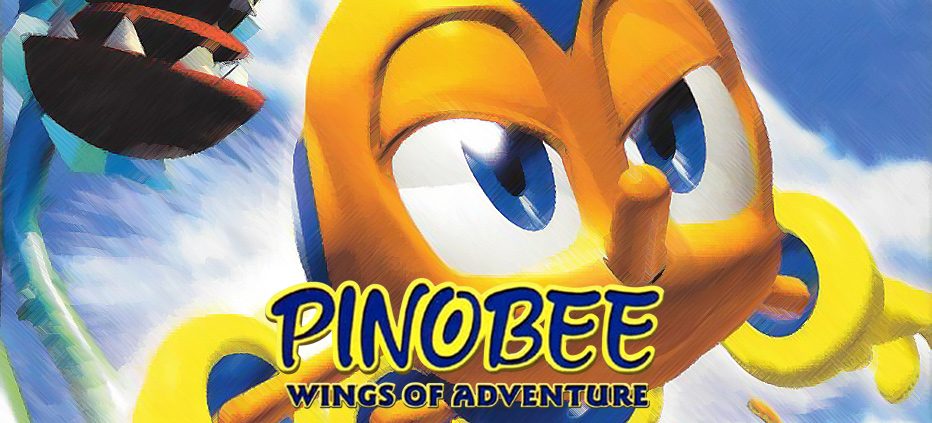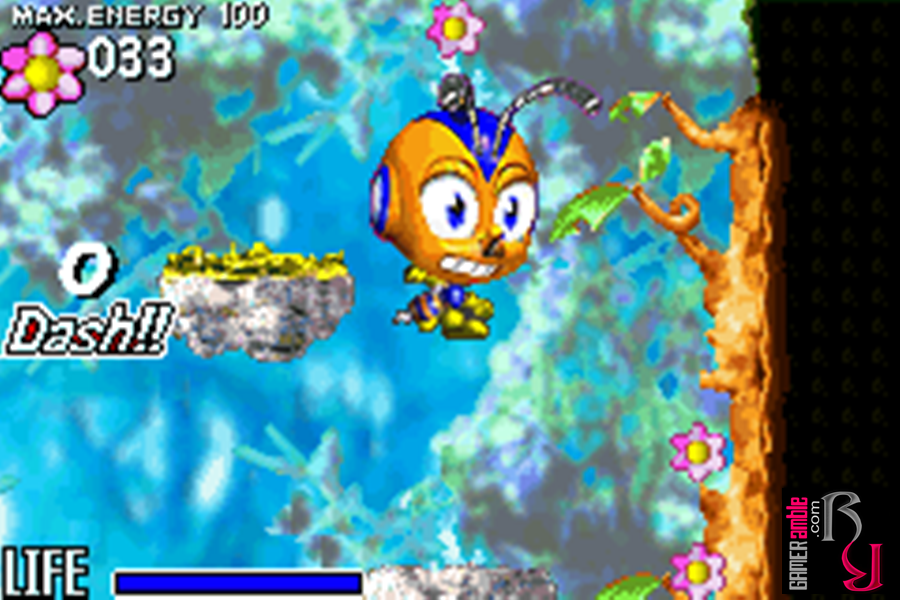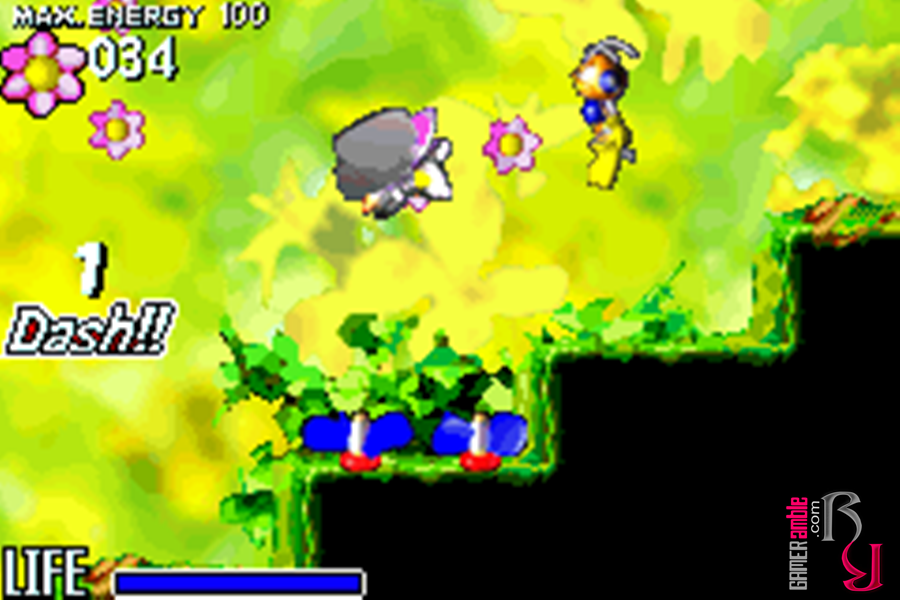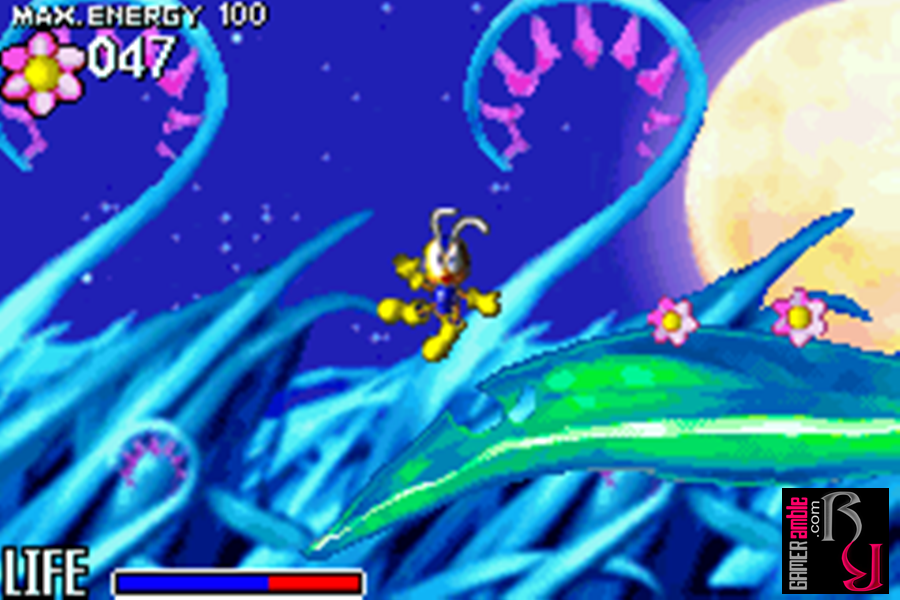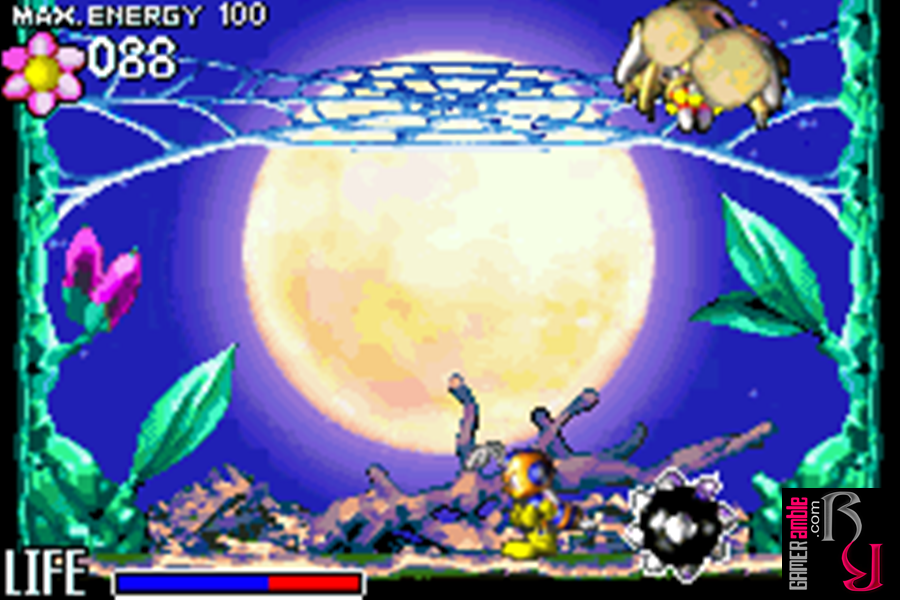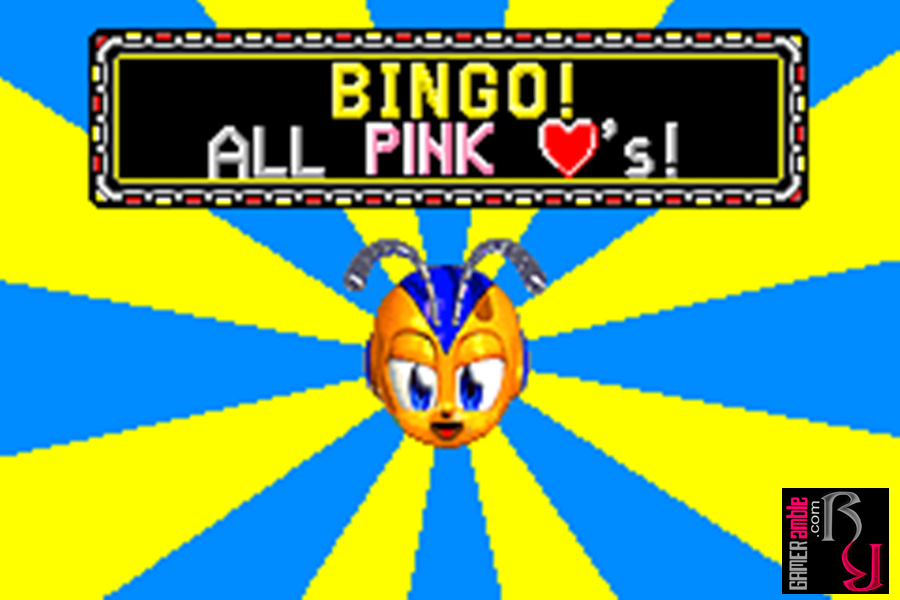Pinobee: Wings of Adventure
Developer: Artoon | Publisher: Activision | Release Date: 2001 | Genre: Platform | Website: n/a | Purchase: Amazon
If the nose was not already a dead giveaway, one glance at the storyline of Pinobee will reveal that it is a modern interpretation of Pinochio except with a robotic bee instead of a marionette. Pinobee is the creation of an elderly bee that is unfortunately kidnapped before he could install a heart in his robot. A passing fairy takes pity on Pinobee and activates him so that he can go and rescue his maker. Without a heart, however Pinobee must also learn some compassion along the way and this is where you come in.
While Pinobee looks like a straightforward 2D platform game in the same mould as 16bit greats like Sonic and Mario, there is a bit more to the game than just jumping on enemies’ heads. This is only if you want to explore everything that the game has to offer. It is still possible to just speed through the levels until you reach the exit but in doing so you will miss out on most of the challenges and end up with a bad ending. At the conclusion of each level, you get to read what Pinobee has to say about his experiences and in doing so discover what you might have missed. It is an interesting idea, but quite strange. Since Pinobee has no heart he has no compassion for other characters and it is your responsibility to make moral choices for him. If you attack friendly characters instead of talking to or helping them, Pinobee will mention it in his diary and you might end up with a character that stops caring about the rescue. If this happens Pinobee will just call the whole thing off, which obviously ends the game! With something like eight endings, there are quite a few possibilities.
Graphically the game looks good with colourful visuals and quirky characters. Levels are sprawling affairs that beg to be explored, but you can simply dash through them as well. Enemies are disposed in the time honoured platform tradition of jumping on their heads, but Pinobee has a dash attack as well which is mapped to the same button. This dash is also used as a double jump, which with the help of the fairy can be increased to the point where you can almost jump through a level without touching the ground! This of course means that the game can become very easy as you can simply dash over all the trouble spots. Besides killing enemies, there are flowers to collect, insects to rescue and even switches to pull which will open new paths on other levels. This adds some longevity provided you do all of this stuff. The whimsical music fits the game, but can become a bit grating on the ears.
Pinobee is definitely a love it or hate it kind of game. The fact that some of the people working on it has worked on Sonic games in the past might have build up unnaturally high expectations. You can see the Sonic influences in places, but it is two very different games. While 27 levels might sound like a lot, they can be conquered in only an hour or two if you do not explore them thoroughly. For a launch game, it does a good job of showing the potential of the system and it is at least not a port. Unfortunately, while it has its moments I do not think Pinobee can quite live up to its expectations.
*Review originally published in 2001.

